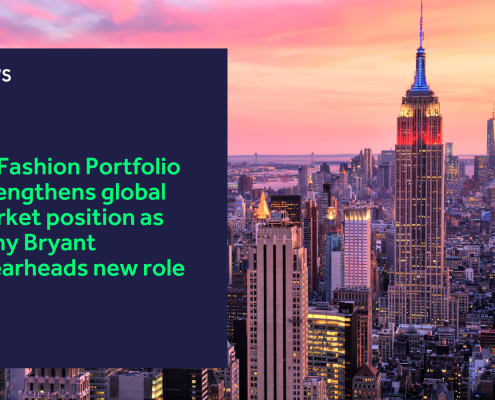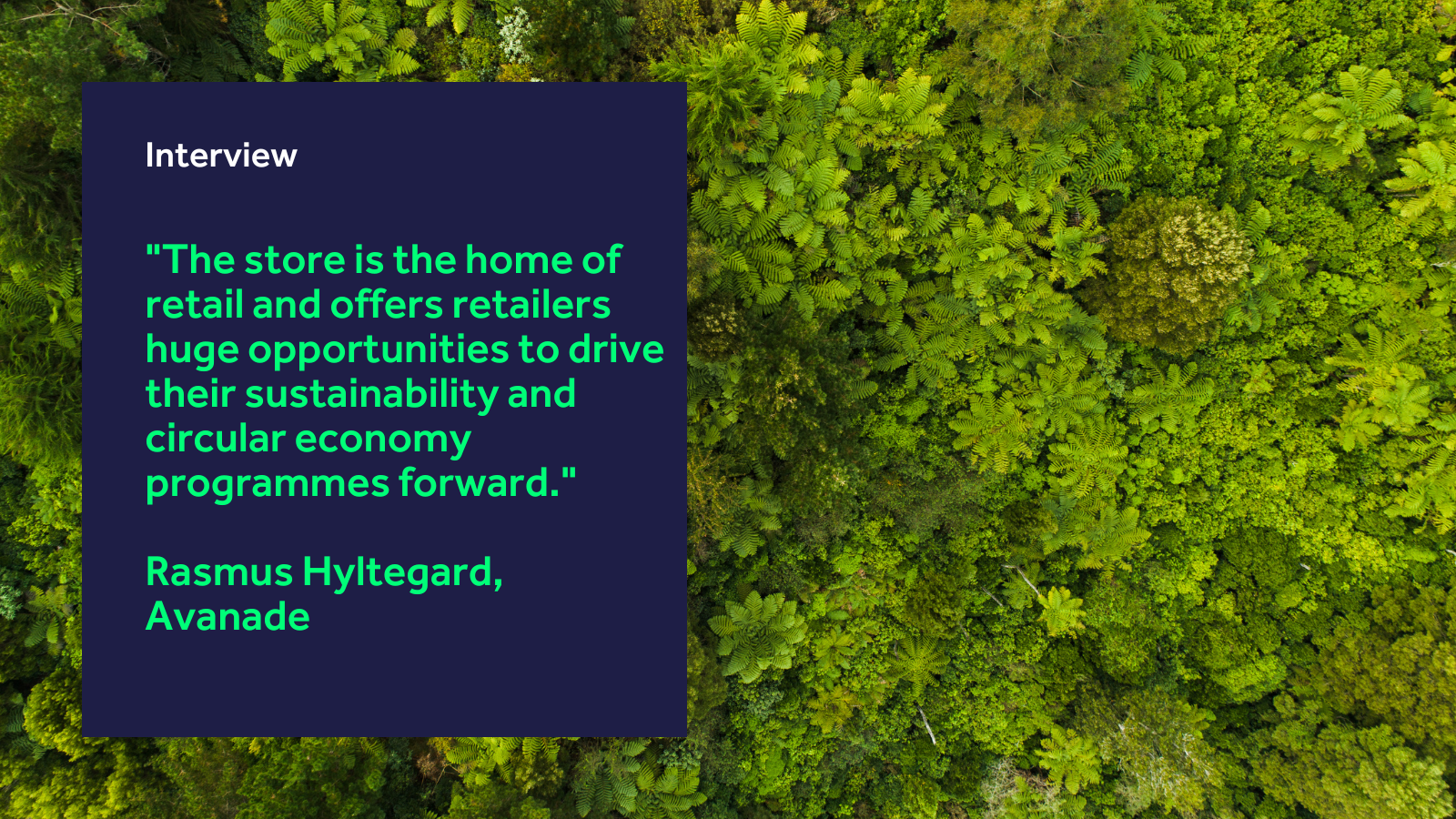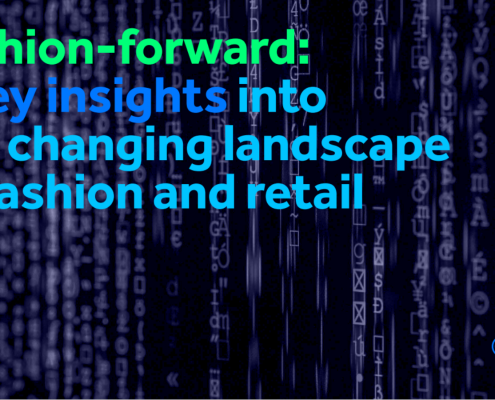K3’s latest whitepaper, Fashion-forward: 5 key insights into the changing landscape of fashion and retail, sought to understand fashion and retail decision makers’ familiarity with key trends and technologies that will shape the industry’s future.
We crucially found that despite all the talk around sustainability in the industry, many brands are still misinformed and misguided on the topic.
To better understand what this means for the industry and gather insight into how brands can tackle sustainability issues, we spoke to Rasmus Hyltegard, Retail/Products Lead in Avanade’s Global Data & AI Centre of Excellence, to learn more.
Some 53% of fashion and retail decision makers said they were unfamiliar with the circular economy. How do you think we can raise awareness around the circular economy and encourage more brands to champion it?
This statistic is surprising – given the loud and clear signal from the market around the demand for a commitment to sustainability and ESG. It might sound obvious but the fastest way to raise awareness among retail decision makers is to show them the commercial impact of circular economy and sustainability initiatives – specifically when it comes to key metrics like sales and workforce retention. For example, consumers are leaning in to green brands – a recent Accenture study found that 81% of consumers plan to buy more environmentally friendly products over the next five years. Today’s customers want to live, work and shop sustainably – demonstrating increased affinity to retailers who value and commit to green initiatives. Meanwhile, employees want to work for conscious organisations – over a quarter would be willing to take a pay cut to work for an organisation committed to the environment.
When quizzed on the stumbling blocks that could prevent the circular economy from becoming commonplace, 35% said they believe low consumer interest will be a key barrier. What are your thoughts on this?
This datapoint is jarring. There’s no denying that consumers are leaning in to environmental and social issues, and they’re choosing to shop from brands that showcase their commitment to a responsible retail model. Recent Accenture research revealed that 64% of US shoppers are already buying from brands with an environmental commitment and values. Moreover, more than half of consumers agree that they are going to continue to make more sustainable food choices post-crisis.
If the fashion and retail decision makers surveyed are correct, and consumer interest in the circular economy is genuinely low, what can the industry do to encourage consumers to engage in more sustainable practices?
One of the overlooked elements here is the role of the store. The store is the home of retail and offers retailers huge opportunities to drive their sustainability and circular economy programmes forward. The store can be central as a hub for sustainable initiatives, such as eliminating waste and plastic packaging, increasing product reuse and recycling. Meanwhile, the store can also become a source for retailers to gather data on customer behaviour and preferences, which can be harnessed to provide a better, greener physical shopping experience. Embrace digital in-store innovations like smart recycling platforms to gamify and energise the circular process. At Avanade, we partner with leading smart store platforms like Ombori and Tomra to enable product reuse and recycling through smart bins and reverse vending machines. This not only educates and promotes initiatives to customers but builds loyalty too. And beyond the store environment, use the product or garment itself to help customers learn and explore as they shop. Employ digital platforms to engage consumers and inform them around the sustainable sourcing or supply chain that has been developed to bring a specific product to market.
Some 32% of fashion and retail decision makers believe that another key barrier that will inhibit the circular economy is costly returns. Do you agree that the circular economy could lead to costly returns?
The impact of returns on the circular economy isn’t surprising. What is surprising is that according to this research only around a third of retail decision makers have recognised that returns are a key barrier to the circular economy. There’s no denying that returns currently present (and will continue to present) a challenge for retailers – both when it comes to the pressure on margins and the impact when it comes to waste and carbon emissions from last mile logistics. Retailers have sought to address this by charging for returns. This is probably a sticking plaster at best. Instead, they need to reconsider and refresh their operating model. For example, traditional D2C organisations are now opening their own stores, manufacturers are sharing space and supply chain networks, micro-fulfilment and dark stores act as a distribution point with little-to-no storefront. By embracing new models and providing greater fulfilment flexibility, retailers can mitigate some of the impact returns have on the circular economy.
The third main barrier listed by fashion and retail decision makers in relation to the circular economy is affordable pricing. What suggestions do you have for brands that would like to offer their consumers sustainable items at an affordable price point, but are currently struggling to do so?
In the eye of the global recession storm, pricing strategies have come under intense scrutiny. On the face of it, consumers maintain that they’re willing to pay more for sustainable products. According to YouGov, around two-thirds of grocery shoppers in major markets such as Germany, the US, the UK and Australia say they’d pay more for environmentally friendly products. However, clearly whether or not they follow through with that noble intention depends on the price and the impact they are individually experiencing from inflationary pressures. One way retailers can navigate this challenge is by using technology to clearly communicate and “sell” the impact of sustainable shopping. We’ve talked about the role of stores already. Taking this a stage further, consider what some more progressive retailers are doing here. Fashion brands are embedding QR coding on their clothing to show where a fabric or garment was made, and consumers are using this to inform their purchase decision – showing how the positive environmental impact justifies the price tag.
1 in 4 fashion and retail decision makers also believe that a lack of appropriate technology will severely limit the implementation of circular practices. What suggestions do you have for brands that want to drive the circular economy but do not currently have the technology in place to achieve this?
Predictably, one of the big hurdles when it comes to embracing the type of modular technology platforms that can drive a circular economy programme forward is cost. And right now, cost control is critical. But being sustainable and optimising costs aren’t mutually exclusive. Circular economy programmes are often innately economical – they deliver efficiencies. So, the investment you make in the technology platforms designed to deliver on your circular economy ambitions can also drive cost efficiency longer term – and the technology investment can pay for itself.
Beyond the cost consideration, building a business case is another stumbling block many retailers will face. Here are three use cases you can consider to craft a compelling case for technology investment in support of your circular initiatives:
- Showcase your sustainability commitment: Embrace technology to measure, reporting on and reduce your carbon impact, proving your commitment to ESG. This captures the momentum of the green consumer and builds trust – benefitting the world and your brand reputation.
- Organisational agility: By implementing intelligent, modularised real-time business platforms, you can gain the ability (and agility) to address fast-moving sustainability challenges throughout the supply chain. From product sourcing through to inventory management and fulfilment.
- Employees as ESG stakeholders: Technology enables retail employees to become ESG ambassadors. IoT and smart space platforms, AI and automation and modern collaboration tools empowers employees to lead the sustainability charge.
Haven’t read K3’s latest whitepaper yet? Check it out for free here!
 https://www.k3btg.com/wp-content/uploads/2024/03/K3-strengthens-global-market-position-blog-header.png
900
1600
Jordan Heal
https://www.k3btg.com/wp-content/uploads/2022/03/K3_Master_Colour_RGB.svg
Jordan Heal2024-03-11 10:58:242025-02-21 14:37:51K3 Fashion Portfolio strengthens global market position as Tony Bryant spearheads new role
https://www.k3btg.com/wp-content/uploads/2024/03/K3-strengthens-global-market-position-blog-header.png
900
1600
Jordan Heal
https://www.k3btg.com/wp-content/uploads/2022/03/K3_Master_Colour_RGB.svg
Jordan Heal2024-03-11 10:58:242025-02-21 14:37:51K3 Fashion Portfolio strengthens global market position as Tony Bryant spearheads new role

